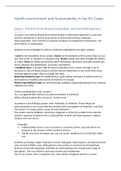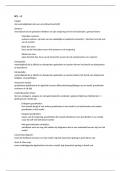Case uitwerking
Cases Healthy Environments and Sustainability in the EU (EPH1024)
- Instelling
- Maastricht University (UM)
Case 1: the era of the great acceleration and the Anthropocene, Case 2: environments and their effects on health, Case 3: defining health in an environmental context, Case 4: perspectives on sustainability and sustainable development, Case 5: european governance of sustainability and health, ...
[Meer zien]





